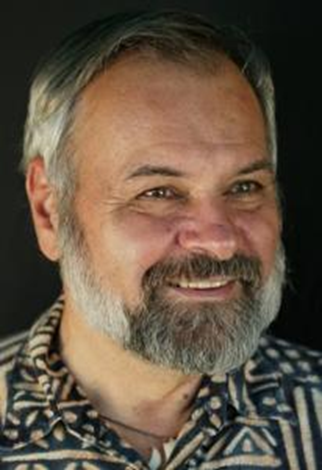AARP Hearing Center
By Paul Chakroff — August 20, 2014
This is the second in a two-part commentary on energy independence in the U.S. Virgin Islands. Part one, "Storage is a Key Piece to Make Renewable Energy Work in the V.I.," can be read here.

I applaud WAPA and the VI Energy Office for undertaking (and the US Department of Interior Office of Insular Affairs for funding) a USVI integrated energy resource plan, known as an IRP.
My support is conditioned by the premises that the IRP will (a) be completed quickly (that is, will not delay movement away from nearly 100 percent dependence on energy generated from combustion of diesel fuel); (b) be generated with extensive participation by local experts, a well-informed USVI general public and other local stakeholders; (c) be comprehensive and seriously consider all reasonable options for meeting USVI current and future energy and conservation needs, including all renewable resource options enabled by bulk energy storage; (d) rigorously evaluate external benefits and costs (externalities) associated with each potential energy resource and technology; and (e) clearly identify specific and measurable five-, 10-, 15- and 20-year milestones for WAPA, the V.I. government, and the private sector.
If undertaken by a company with vision and commitment to rigorously evaluate all reasonable options for meeting USVI’s future energy needs, the IRP can help move the USVI from an island state almost 100 percent dependent on fossil fuels to an island state with a portfolio dominated by renewable energy resources by 2025.
The USVI can be 90-percent independent of fossil fuels by2025, and the IRP can help get us there. Findings of the National Renewable Energy Laboratory (NREL) presented in conferences of the Energy Development in Island Nations (EDIN), combined with the use of bulk energy storage, suggest that a 90-percent renewable energy goal is achievable by 2025.
In their “USVI Energy Roadmap Analysis” NREL offered three scenarios by which the USVI could achieve the governor’s 60 percent by 2025 goal. The majority of the goal would come from energy efficiency in all three.
I support energy efficiency and conservation initiatives as the first means to reduce energy demand and associated environmental, economic and social impacts. But, by achieving most of the governor’s goal with improved efficiency of energy generation from fossil fuel combustion, we remain dependent upon fossil fuels for the majority of energy generation.
Our continued dependence on fossil fuels is illustrated by the percentages of energy delivered to end users under each NREL scenario. In their best case scenario for renewables, more than 60 percent of the energy delivered to end users in 2025 comes from combustion of fossil fuels. In their worst case for renewable energy, fossil fuels account for 70 percent of delivered energy. Under the NREL scenarios ,we would still be subject to high fuel costs reflected in high LEAC (the Levelized Energy Adjustment Clause,) fuel price volatility, high environmental and public health costs of diesel, LPG or LNG combustion, and we would continue to send 60 percent to 70 percent of our energy dollars outside the territory, rather than investing in domestic USVI energy resource development and use.
Is 60 to 70 percent dependence on fossil fuels better than our current portfolio? Sure. But we can do much better. Recently Island Energy Innovations, LLC (IEI), a company with which I am associated, completed a pre-feasibility study for grid penetration of renewables in St. Lucia. IEI’s preliminary findings are that a St. Lucia energy portfolio with over 90-percent renewables is possible by 2025. AND, the long-term cost of energy generation in St. Lucia would be reduced by 25 percent.
The St. Lucia portfolio includes wind, solar photo voltaic, waste-to-energy, biofuels, batteries and pumped hydro storage. The USVI has all the energy resources used in the St. Lucia analysis, including the potential for bulk energy storage needed to maximize penetration of wind and solar into both St. Croix and St. Thomas/St. John grids. In the St. Lucia analysis, with only 15 percent of generating capacity coming from storage (pumped hydro and batteries), they could meet energy demand with 90 percent of energy from locally generated renewable resources. A modest amount of energy from pumped hydro storage leverages a lot of wind and solar energy.
Not only does the diversified portfolio provide 90 percent of delivered energy from domestic renewable resources, but it keeps open the door to new technologies that may mature over upcoming years; stabilizes energy costs, keeps energy dollars at home, increases energy security; AND reduces the cost of energy to the utility and the St. Lucia ratepayer.
The USVI can learn from the St. Lucia analysis. In WAPA’s integrated resource plan request for proposals, bidders are asked to develop a 20-year (2015-2034) IRP through a "rigorous evaluation of potential future resource additions to the VIWAPA system."
The RFP defines potential resources as “all known, feasible, and otherwise reasonable options for meeting VIWAPA’s future energy and conservation needs.”
Clearly, wind and solar PV (both at utility scale and as distributed sources,) biofuel, waste-to-energy, batteries, and pumped hydro storage are mature, commercially proven “reasonable” technologies that must be evaluated.
I call upon WAPA, VI Energy Office, the sitting governor, gubernatorial candidates, senators and candidates for senate, and an informed public to insist that the company selected to write the USVI 20-year integrated energy resource plan rigorously evaluate all reasonable options for meeting US Virgin Island’s current and future energy and conservation needs, and provide specific milestones toward a more affordable, less fuel-price volatile, and greener energy future dependent predominantly on USVI domestic renewable energy resources – not predominantly dependent on imported fossil fuels.
Paul Chakroff is an independent consultant with bachelor's and master's degrees in environmental sciences and work experience in the Caribbean, Africa, Asia, and the Middle East. A resident of St. Croix for more than 12 years and former executive director of St. Croix Environmental Association, Chakroff’s current work focuses principally on environmental impact assessment, protected area conservation and renewable energy resource development.































































